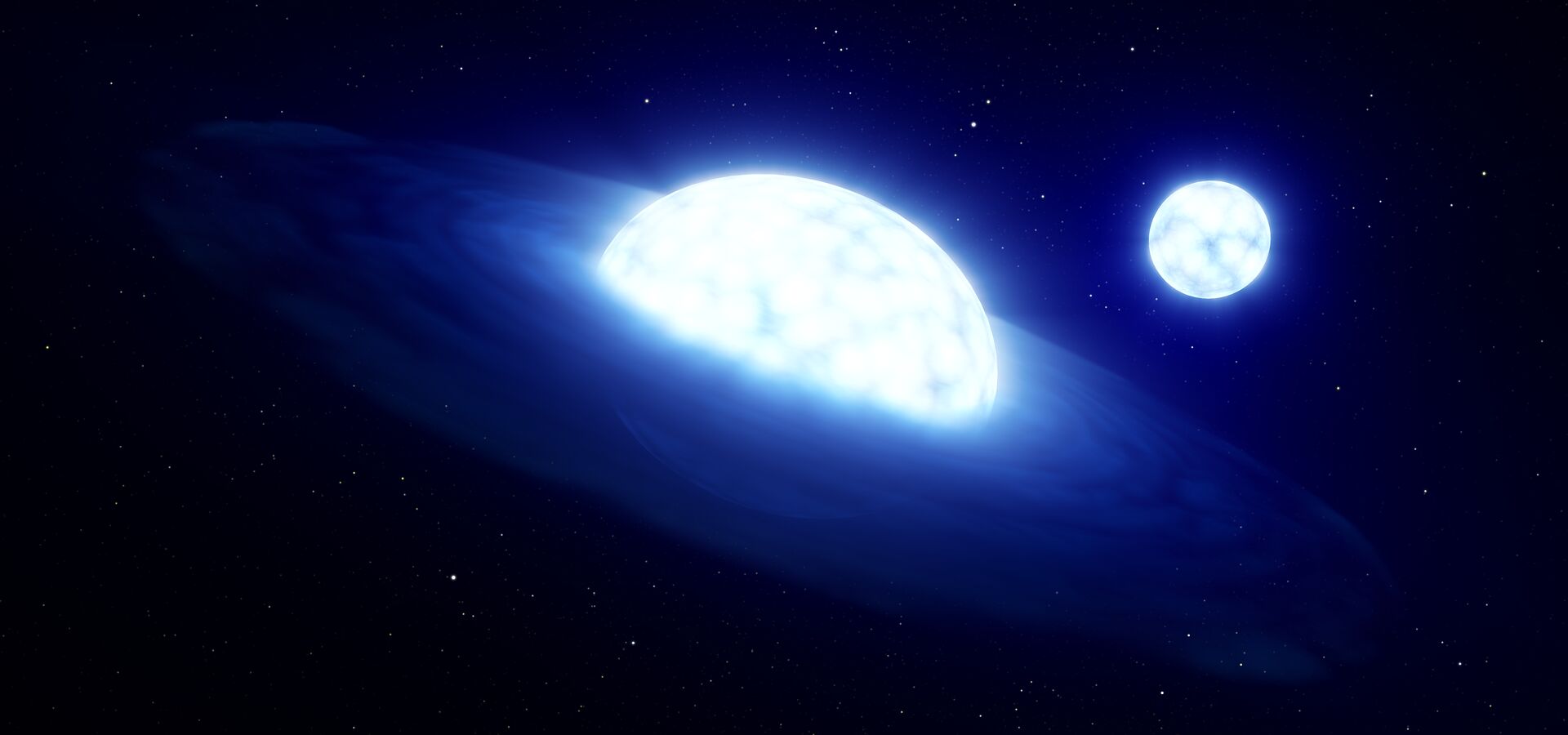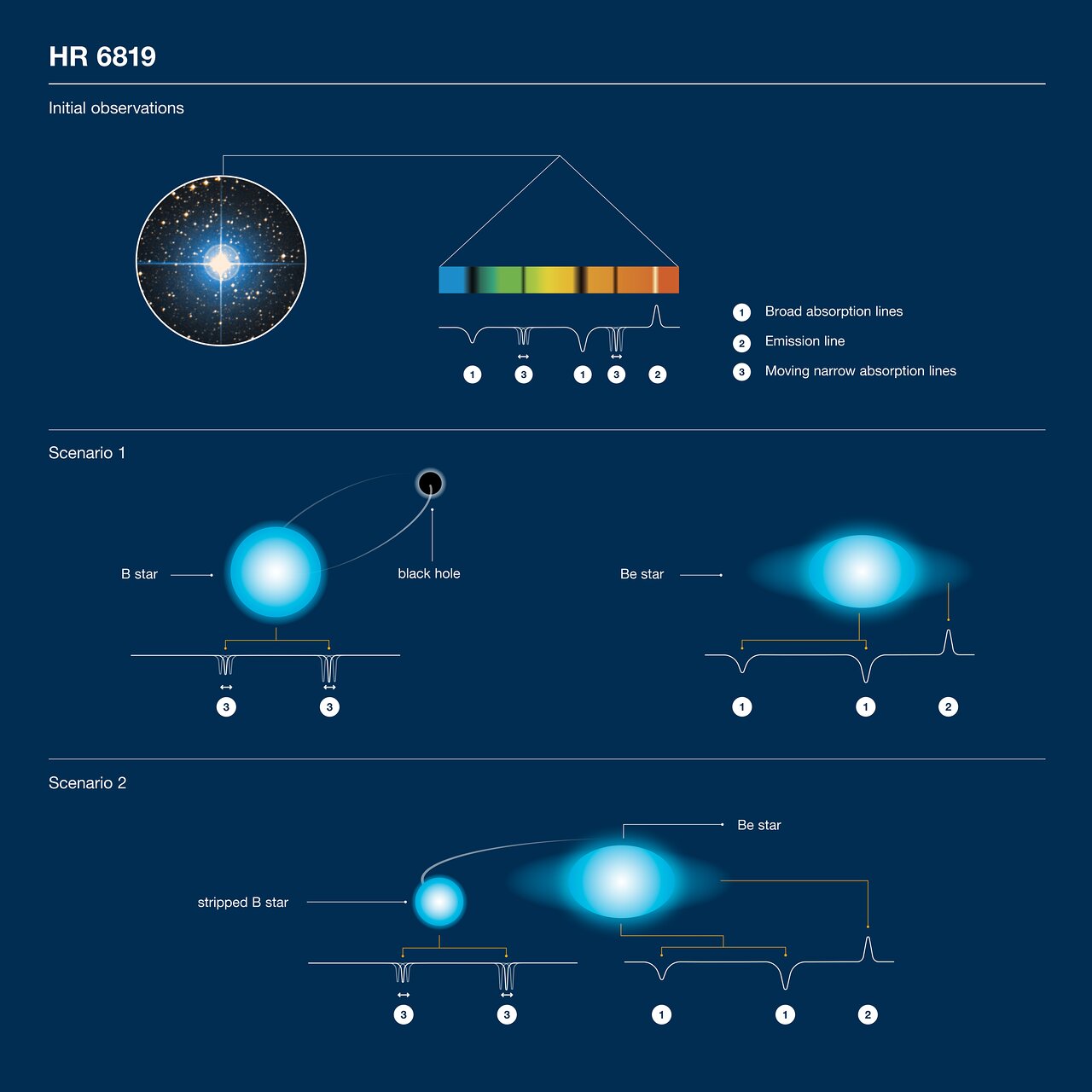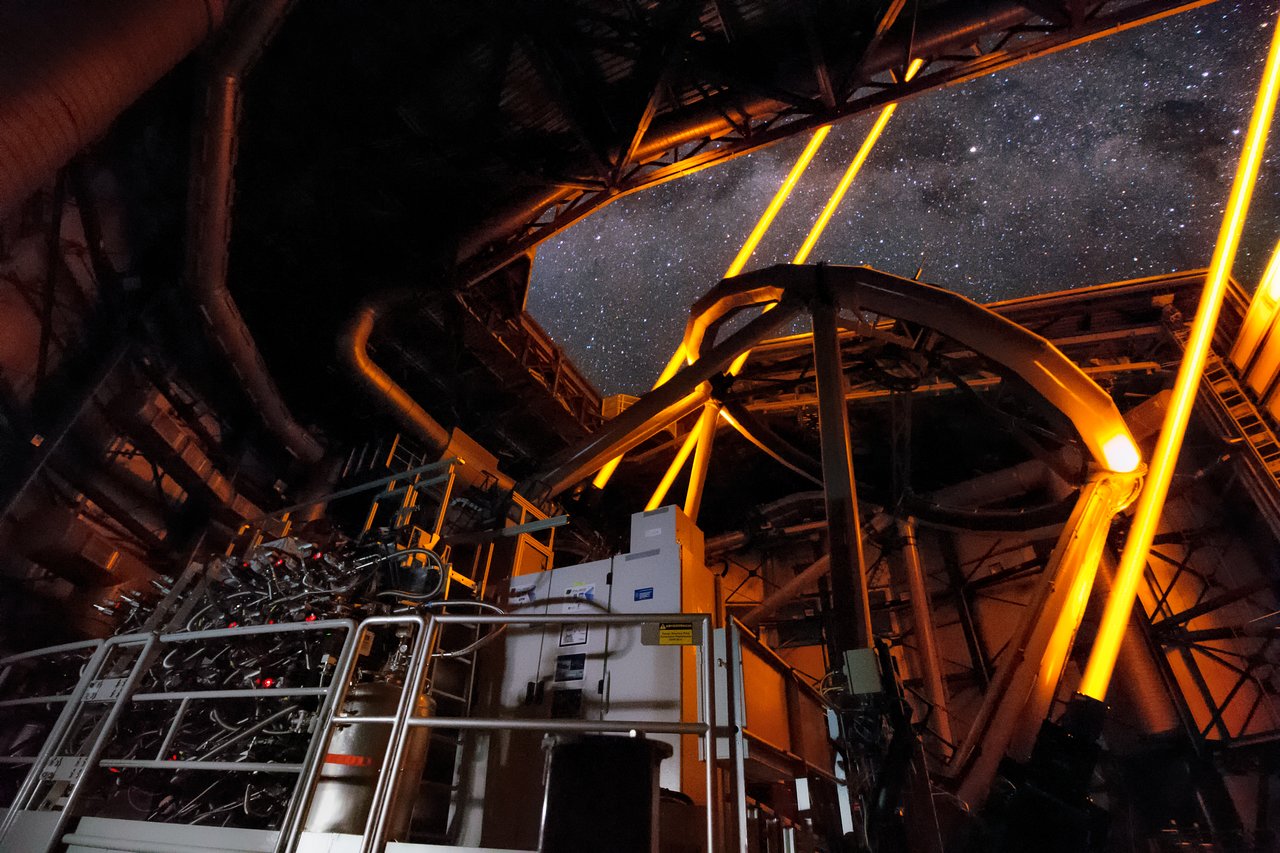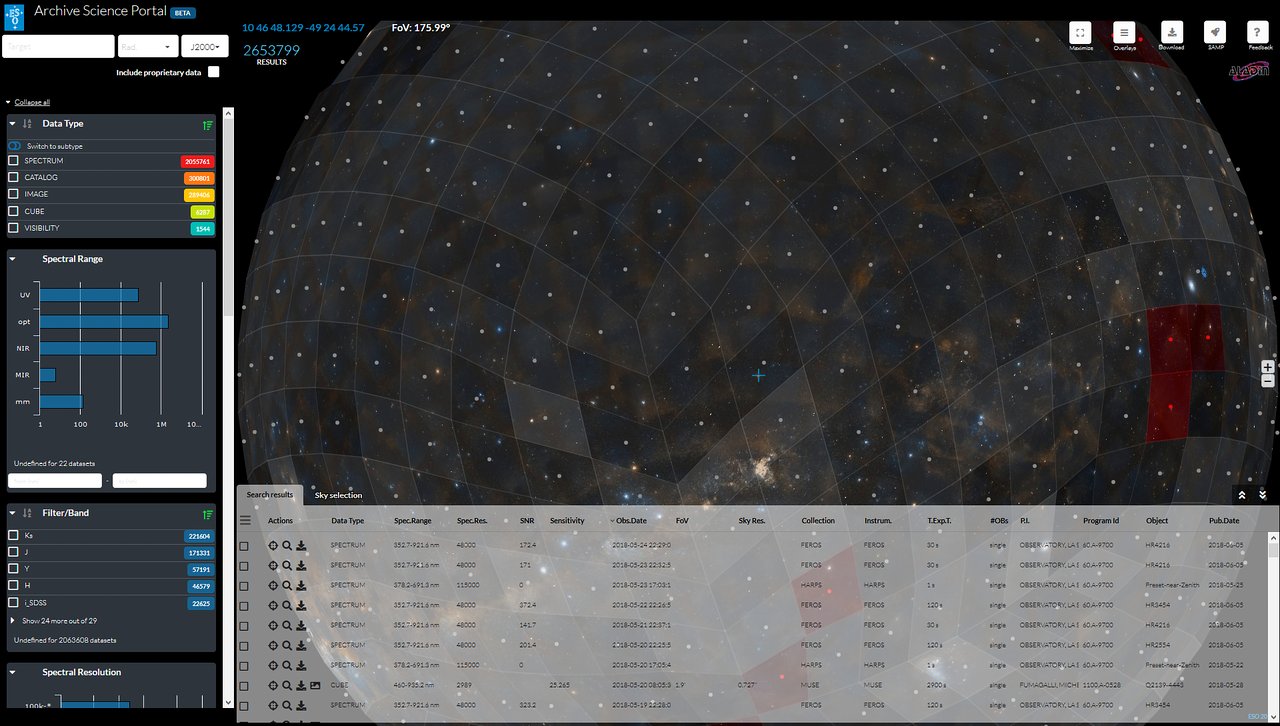- Why the closest black hole to Earth announced in 2020 turned out not to exist
- How scientists come up with hypotheses and test them
- Why scientific collaboration and public datasets are key to the advancement of science
In many ways scientists and detectives have very similar jobs: they both have to explain puzzling clues and come up with ways to test their hypotheses. But, just like detective stories, the scientific process isn’t always linear and is often riddled with red herrings and plot twists. The case of the missing black hole in HR 6819 is no exception.
Our story began almost 20 years ago at ESO’s La Silla Observatory in Chile, where Thomas Rivinius, ESO staff astronomer, and his collaborators used the MPG/ESO 2.2-m telescope to observe HR 6819, a blue star visible to the naked eye. “We immediately recognised that it was interesting,” Thomas reminisces. What appeared to be a single star was actually two stars with a strange behaviour. “We asked for follow-up observations and then we realised it was so interesting that we didn't understand it at that point. So we put it for a while on the back burner until we could understand it better, either with a better theory, more observations, or different stars.”
Flash forward to 2019, when a team of astronomers announced the discovery of a black hole in the LB-1 system. These observations bore a striking resemblance to Thomas’ data on HR 6819, so he and his team decided to reopen that case.
The data they had is what we call spectra –– the light of an astronomical object spread out like a rainbow into its constituent colours. Lines in spectra, like fingerprints, allow astronomers to deduce the chemical makeup of their targets, and even how fast they move.
HR 6819's spectrum (see simplified version in the figure) contains many different kinds of lines: bright and dark, broad and narrow, moving and static... The broad absorption lines come from a so-called Be star: a giant blue star, more massive and hotter than our Sun, which rotates very rapidly. “Be stars actually rotate so rapidly that they almost fall apart,” explains Thomas. “They are no longer spherical but somewhat flattened, and around their equator they form a gaseous disc ejected from the star itself.” This hot gas around the star creates bright emission lines, clearly visible in the spectrum of HR 6819.
But apart from these lines there was a second set of much narrower lines, similar to those of giant B stars (without an “e"). These are normal blue massive stars, normal in the sense that they don’t spin as fast as Be stars. But something was wrong with this particular B star: the team saw the lines of this star moving back and forth every 40 days, which meant that the star was orbiting around something. It couldn’t be the Be star though, because the lines of that star did not seem to move. When the team worked out the mass of this unseen third object, they concluded that it had to be at least four times more massive than the Sun. An invisible object so massive could only be a black hole.
According to their interpretation, HR 6819 was a triple system, composed of a giant B star orbiting a black hole every 40 days, and a rapidly spinning Be star further away from these two. If confirmed, this would be the closest black hole to Earth. But don’t worry, it’s 1000 light-years away!
The plot thickens
When the paper by Thomas and his team was published it received quite a lot of attention, not only from the public and the media, but also from other astronomers who were keen to test if the black hole hypothesis was correct. “When we saw the paper on HR 6819, we were immediately reminded of LB-1,” says Julia Bodensteiner, who at that time was a PhD student at KU Leuven in Belgium, working in a group that studies massive binary stars. “We had worked on this system, and we had proposed that actually there is no black hole. And we thought: well, maybe this scenario applies here too.”
The Leuven team reanalysed Thomas’ data, which was publicly available in ESO’s Science Archive –– more on this later –– and found something intriguing: the lines of the Be star were not static, but they did seem to move very subtly. “Basically the difference in our analysis is which of the spectral lines we used to study the motion of the Be star,” explains Julia. “Depending on which lines you use, you either get a significant result showing the Be star is moving back and forth or not.”
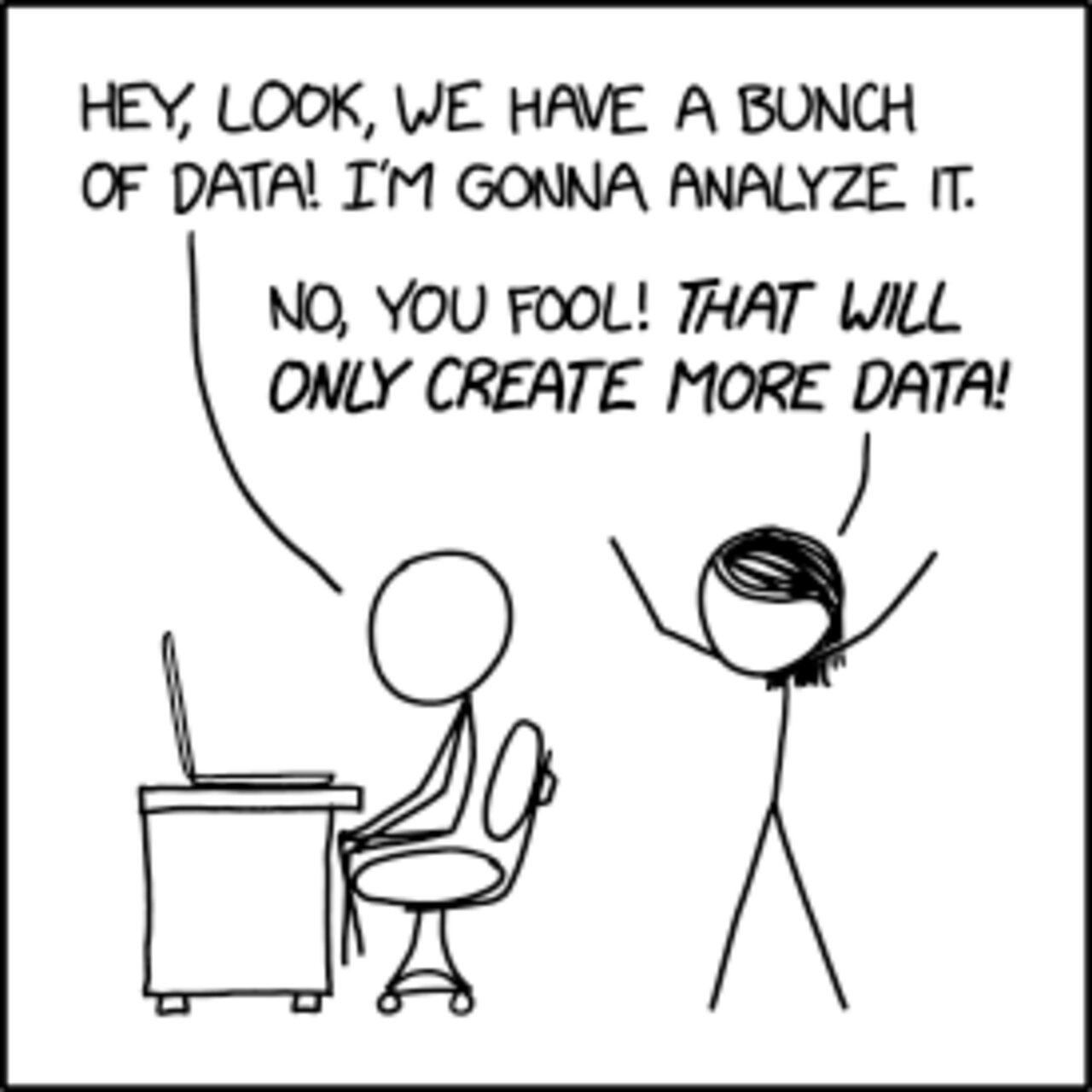
What was interesting was that this subtle motion of the Be star occurred every 40 days, just like the normal giant B star, suggesting that both stars could be orbiting each other. But why was the B star moving so much faster than the Be one? That should not be the case if both stars had similar masses.
The Leuven team proposed an alternative scenario in which the B star is not a massive giant, but something called a stripped B star: a star that has lost its outer layers. “If you got two stars in orbit around each other,” says Abigail Frost, a post-doctoral researcher at KU Leuven, “they may get close enough to interact, and during that interaction one star can steal material from the other star, stripping it of its outer layers and its atmosphere. And that’s essentially how you go from two kinds of fairly normal stars to one which has gained mass and one which has been stripped of its mass.” In this scenario, illustrated at the bottom of the previous figure, there is no black hole.
They presented this interpretation in a paper led by Julia, and other astronomers worldwide published other papers in parallel. “There were several papers,” remembers Thomas, “and for some of them I thought they proposed very viable hypotheses. When I realised that the no-black-hole scenario was indeed a viable hypothesis, at least as likely as ours, I started to sweat a little.”
But some observations obtained afterwards reported a possible wide companion, in line with Thomas' scenario, so perhaps there was a black hole after all. As Sherlock Holmes would put it: the game was afoot!
Cornering the suspects
The problem with these spectroscopic data, useful as they are, is that the signals of both stars are mixed together, like footprints of different suspects on a muddy path, and it’s hard to disentangle them conclusively. To settle the debate both groups wanted to actually see the stars side-by-side.
This is easier said than done, given that HR 6819 is 1000 lightyears from Earth. In the no-black-hole scenario, the separation of both stars from our point of view would be about the size of a golf ball seen from 9000 km away. No single telescope can measure such tiny details; the only way to do so is by linking several telescopes together with a technique called interferometry.
“We all knew that we needed interferometric data,” says Thomas, “and we all knew that there's only one facility in the world that can get it, and that's the VLTI, due to the position of HR 6819 on the sky.” He’s referring to the Very Large Telescope Interferometer, which is part of ESO’s Very Large Telescope (VLT), located at Paranal Observatory in the Chilean Atacama desert. The VLTI can combine the light of up to four telescopes, creating a huge “virtual” telescope as large as the separation between the individual ones. This allows astronomers to discern details smaller than what’s possible with a single telescope.
But rather than duplicating efforts, both teams decided to join forces. “We had already prepared a proposal when Thomas and his team contacted us,” says Julia, “and we were really happy about that, because we don't need to ask for the same data twice on such a competitive telescope, it makes no sense. So joining forces and working together was just basically the only good option that we had.”
The light collected by the VLTI can be captured by different instruments, and the team picked GRAVITY as the best one for this task. But the field of view of the VLTI is really small, so if the two stars were far apart, as predicted by the black hole scenario, one would be out of GRAVITY’s reach.
The team needed a backup plan. They requested additional observing time with MUSE, an instrument mounted on one of the four 8.2-m telescopes of the VLT. Using laser-assisted adaptive optics to correct the blur caused by atmospheric turbulence, MUSE would be able to discern both stars if the black hole scenario was true. Moreover, both GRAVITY and MUSE would provide additional spectral information that would allow the team not just to see the stars side-by-side but also to tell which one was which.
Mystery solved
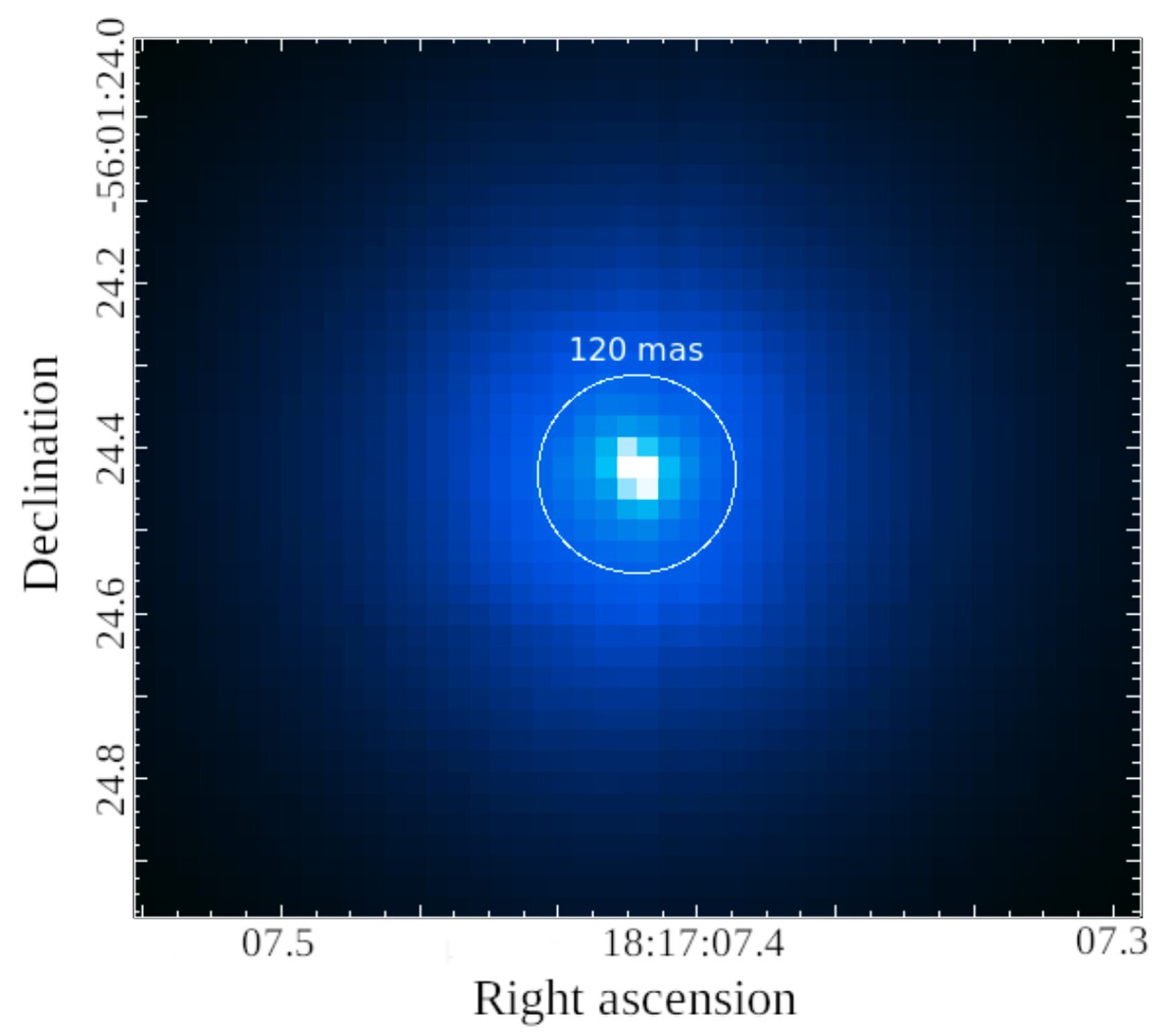
“We got the MUSE data first, if I remember correctly,” says Abigail, “and we didn't see the wide companion.” The MUSE data is shown to the right: if the black hole scenario was right, then there should be a second star somewhere over the white circle surrounding the central star. But there was nothing there.
At this point Sherlock Holmes would argue that when you have eliminated the impossible, whatever remains, however improbable, must be the truth. Luckily the team didn’t have to resort to that. “We needed the GRAVITY data afterwards to see if there were two bright stars within the GRAVITY range,” Abigail continues, “and that was the final piece of the puzzle.”
Thomas conducted the first GRAVITY observations himself at Paranal, and he could immediately tell what was going on when the data came in. “Looking at the data as it was fresh out of the instrument, I realised that there was no distant companion,” he says.
Interpreting interferometric data is more complex than this may suggest, though. “In interferometry we don't see an image,” explains Antoine Mérand, ESO staff astronomer and VLTI Programme Scientist. “We recover some information about the spatial distribution of the light, so we can tell where each object is, but we don't have directly an image like you would get from a regular telescope.” Reconstructing images from interferometric data requires complex algorithms, and this is when Antoine joined the project. “Abigail contacted me. She was using a code that I wrote to analyse the GRAVITY data, and we wanted to make sure that we explored all the possible ways in which we can interpret the data, and also give the best confidence in the final results that we have.”
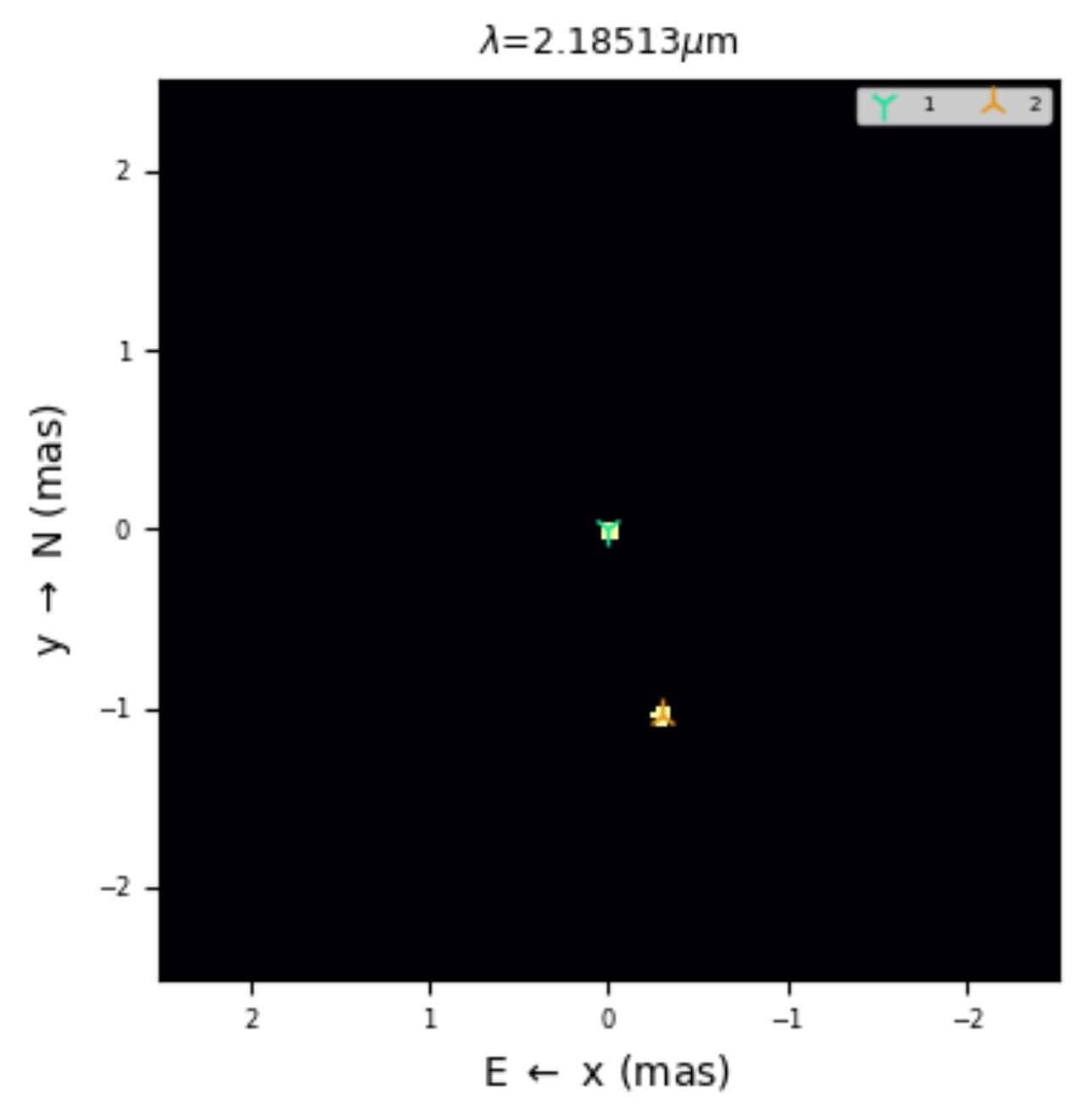
The image to the right is the one that best explains the GRAVITY data, and it shows two stars in close proximity, as predicted by the no-black-hole scenario. Moreover, subsequent GRAVITY observations in the following weeks confirmed that the stars were orbiting each other consistently with the 40-day period inferred from the original spectroscopic data.
The teams have now published these findings in a joint paper led by Abigail, where they confirm that there’s no black hole lurking in HR 6819. Instead, the system comprises only two stars orbiting each other: a stripped B star that has lost its outer layers, and a rapidly-spinning Be star that stole that material.
“You know my methods. Apply them.”
“Personally I would have wanted my interpretation to be correct,” says Thomas. “But I have to admit that this interpretation is the far more interesting option.”
“In Leuven we were really looking for these black holes,” continues Julia, “so I think we would have been very fine with the original interpretation of that system. But yeah, of course this stripped star scenario is very exciting.” Julia is now an ESO Fellow in Garching, Germany, where she’ll continue studying these enigmatic objects.
According to Abigail, “it was really a win-win situation: either way we find something pretty cool. On the one hand we confirm the existence of the nearest stellar-mass black hole to Earth. Or on the other hand, we find this really exciting and difficult to capture evolutionary stage of a massive binary stellar system.”
But scientists are human, and sometimes it can be hard to let go of an idea in which they are emotionally invested. Sherlock Holmes once said that “the emotional qualities are antagonistic to clear reasoning” and the team could not agree more. “The important thing is to focus on the science,” says Julia, “to try to keep the personal feelings apart, and not to look for who's right and who's wrong, but to think of how we can advance the question that is on the table and how we can advance to find a good answer to that.”
“Sometimes it doesn't go this way,” says Antoine. “And even though this is the right thing to do, some people are emotionally invested in some explanations, and they will maybe be a little bit blinded by this emotional investment.”
Like Thomas says, “scientific competition is not about who is getting the data; scientific competition is on the basis of the data.”
In this regard, making data publicly available is key to ensure the reproducibility of scientific research. The various teams that challenged the black-hole scenario could do so only because the original spectra were available to everyone in the ESO Science Archive. Moreover, ESO also makes software publicly available. This includes the so-called data reduction pipelines –– software that astronomers use to convert raw data into science-ready data. ESO maintains a set of pipelines tailored to each instrument, which users can freely download, and an interactive archive with already-processed data.
As Antoine explains, “these observations will be public after a year, and anybody can download the data. There are ESO-provided pipelines to reduce the data. The code that I wrote is publicly available. People can download the code and re-run the same analysis that Abigail did.”
Abigail concurs: “The only way we can trust any scientific result is if we give the data we used to the community so that anyone can use their own method, and look at the data in a new way and check that the original hypothesis is sound. It really engages a level of accountability in the research that we do and makes it reliable.”
The team believes that this openness and accountability are key to ensuring the public’s trust in science. As Abigail explains, “science is constantly reviewed. It's not necessarily the case that the earlier steps are wrong. [Thomas and his team] did what they could with the data that was available. Only when we got more data, better and more sensitive, could we actually then push it to the next level.”
We don’t know what black holes and stripped stars will hold in store for astronomers in the coming years, but if this story is any indication of how things might go, we can safely say that it will be anything but elementary.
Biography Juan Carlos Muñoz Mateos
Juan Carlos Muñoz Mateos is Media Officer at ESO in Garching and editor of the ESO blog. He completed his PhD in astrophysics at Complutense University in Madrid (Spain). Previously he worked for several years at ESO in Chile, combining his research on galaxy evolution with duties at Paranal Observatory.

